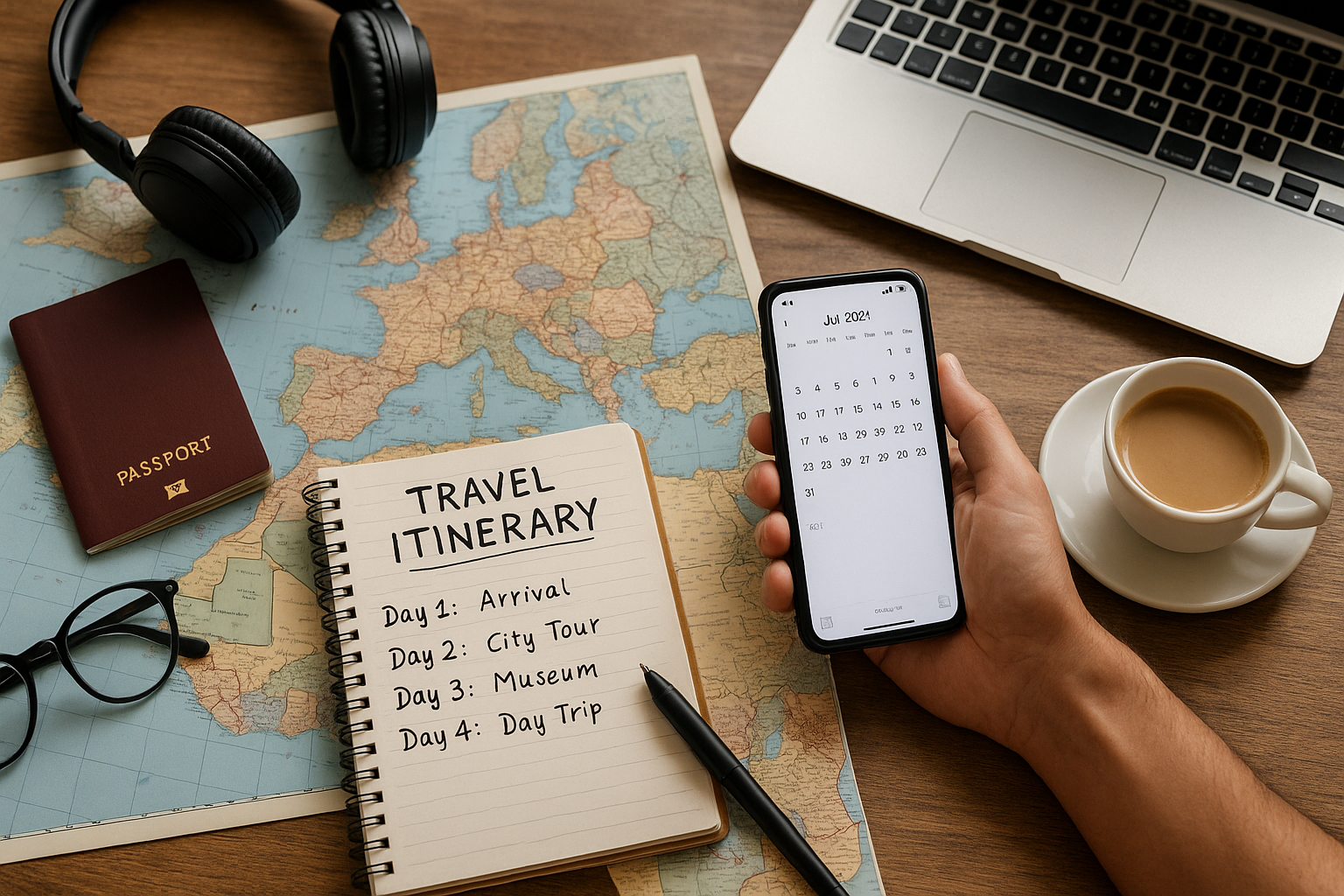A well-crafted itinerary can turn a good trip into a great one. It saves you time, keeps your schedule organized, and ensures you make the most of every moment in a new place. Whether you’re planning a short city break or a multi-country adventure, this guide will walk you through building the perfect travel itinerary step by step.
Step 1: Choose Your Destination and Trip Length
Start by clearly defining where you’re going and how long you’ll be there. This helps set realistic expectations for what you can do and see. Ask yourself:
- Is this a relaxing trip or an adventure-packed journey?
- Do I want to explore one place deeply or visit multiple destinations?
- Will I be moving around or staying in one location?
Being honest about your travel style will shape how you plan your days.
Step 2: Do Initial Research on the Destination
Before you fill in any schedules, learn about the destination:
- Major attractions and landmarks
- Local customs and cultural norms
- Public transportation options
- Entry requirements (visas, vaccines, etc.)
- Safety tips and travel advisories
Use travel blogs, YouTube videos, and guidebooks to get a broad overview. Google Maps and TripAdvisor are also helpful for pinpointing where things are located.
Step 3: List the Must-See Attractions
Now it’s time to identify your top priorities — the places or experiences that define the trip for you. Create a list of must-see attractions and activities.
For each one, note:
- Estimated visit time
- Opening hours and closed days
- Admission fees or required reservations
- Proximity to other attractions
Focus first on non-negotiables, then build the rest of your itinerary around them.
Step 4: Group Activities by Location
Avoid wasting time crisscrossing the city. Instead, group your activities by neighborhood or district. Use maps to plan days logically.
For example, in Paris:
- Day 1: Eiffel Tower, Champs-Élysées, Arc de Triomphe (Western Paris)
- Day 2: Louvre Museum, Notre-Dame, Sainte-Chapelle (Central Paris)
This minimizes transit time and makes the trip flow more naturally.
Step 5: Leave Room for Flexibility
One of the biggest mistakes travelers make is overplanning. Trying to squeeze in too much can lead to burnout and missed opportunities. Instead:
- Plan 2–4 activities per day at most
- Add free time for spontaneous exploring or relaxing
- Schedule buffer time between attractions
Let your itinerary guide you — not control you.
Step 6: Include Transportation and Travel Time
Don’t underestimate how long it takes to get from one place to another. Add realistic time blocks for:
- Flights and airport transfers
- Trains, buses, or ferries
- Walking and public transit
- Waiting times and delays
Use apps like Google Maps, Rome2Rio, or Citymapper to estimate times and route options.
Step 7: Plan Meals and Breaks
Food is a big part of the travel experience, so be intentional about meal planning.
- Research top-rated local restaurants or street food vendors
- Make reservations where needed
- Leave space for lunch, dinner, and snacks
- Don’t forget coffee shops or sunset spots
Knowing where you’ll eat can reduce stress and ensure you don’t miss out on local flavors.
Step 8: Use an Itinerary Tool or Template
Organize everything in a simple and clear format. Some great tools include:
- Google Sheets or Excel: Customizable and easy to access offline
- Notion or Evernote: Great for attaching links, images, and notes
- TripIt or Wanderlog: Automatically imports bookings and creates visual itineraries
Include columns or sections for:
- Date
- Time
- Location
- Activity
- Notes (e.g., confirmation numbers, costs)
Step 9: Book Activities in Advance
If your itinerary includes popular attractions, tours, or restaurants, book them ahead of time to avoid missing out. This is especially important for:
- Theme parks
- Museums with timed entries
- Cooking classes or experiences
- High-demand restaurants
Keep confirmations saved in your phone and cloud storage.
Step 10: Share and Sync Your Itinerary
Share your finalized itinerary with:
- Travel companions
- Family members (for safety)
- Accommodation hosts (when needed)
You can also sync it with your calendar app so reminders pop up automatically during the trip.
Enjoy a Smooth and Balanced Trip
A great itinerary is all about balance — between planning and spontaneity, activity and rest, must-sees and hidden gems. When done right, it acts like a personal guidebook that enhances your entire experience. By following these steps, you’ll travel smarter, stress less, and return home with richer memories.
